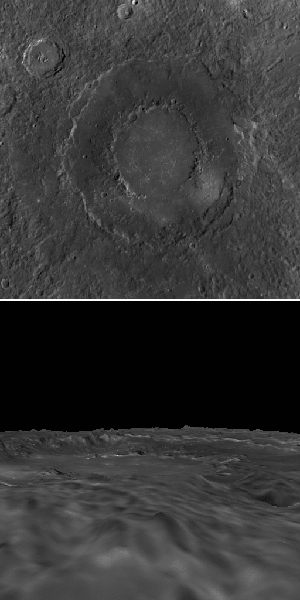Bill Dunford • Jul 15, 2013
A New Dimension for Mercury
The first planet is rarely first in the public mind. Scorched, airless Mercury doesn't get nearly the same amount of attention as Mars or the shimmering splendors of Saturn.
But Mercury is worth exploring, both for scientists who want to understand how worlds work--and for anyone who enjoys the beauty of nature. Mercury's beauty is stark, to be sure. Desperately stark. But those bare landscapes reveal striking geometric forms even as they hide scientific secrets, such as exactly how the sun blasts away the surface in some locations to vaporize the rock itself, leaving behind the famous blue 'hollows.'
Now there's a new way to see the sights of Mercury. The robotic spacecraft known as MESSENGER has been orbiting the planet since 2011. It has snapped more than 150,000 images of Mercury's tortured surface, most of which are available to the public. MESSENGER carries more than cameras, though. Among the other instruments along for the ride is a laser altimeter that can map the surface height with an accuracy of 30 centimeters. Mercury explorers have combined that height data with the photos to create a 3D model of much of the planet.
At the MESSENGER web site, anyone can use the QuickMap feature to see the pictures and explore the 3D landscapes. For example, here's a new angle on Victoria Rupes, a dramatic cliff hundreds of kilometers long, complete with volcanic vents, that formed as Mercury shrank while it cooled.

Here we see a giant impact basin about 290 kilometers across. Named for the composer, Rachmaninoff features a set of double rims and other land forms of interest to geologists. Using the height maps, they can delve into Rachmaninoff almost literally.

Visit the MESSENGER site, and take a tour--in the comfort of your own home--of a place that would kill you in a few short minutes if you went there in person. There's beauty to be found if you look.
Support our core enterprises
Your support powers our mission to explore worlds, find life, and defend Earth. You make all the difference when you make a gift. Give today!
Donate

 Explore Worlds
Explore Worlds Find Life
Find Life Defend Earth
Defend Earth

